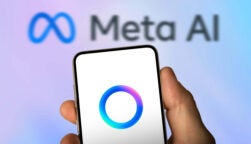LinkedIn is packed with opportunities—almost 6 million job posts in the US alone.
Whether you’re a recent grad or a seasoned professional, the business networking platform can help you find jobs while also pointing recruiters in your direction – as long as you have a stand-out LinkedIn profile, that is.
In this guide, we explain how to use LinkedIn to search for a job and share templates for messages, connection requests, and posts.
Key Takeaways
- A LinkedIn profile with outcome-centered experience descriptions, skill labels, and a high-res photo helps you appear in more search results and wow job posters.
- Tailor your resume for different job postings you find on LinkedIn. Also, turn on job alerts for filter combos that deliver excellent matches.
- Networking on LinkedIn can be key to finding your next job. Sending tailored connection requests, arranging chats with existing connections, and sharing your openness to work can give you a leg-up.
How To Use LinkedIn To Search for a Job: 7 Top Tips
1. Polish your profile
Before starting your job hunt on LinkedIn, refine your profile from top to bottom.
Top of the profile
 This just in! View
This just in! View
the top business tech deals for 2026 👨💻
- Profile photo: Opt for a high-resolution photo that shows your face and conveys your personality. Think professional but approachable.
- Headline: State what you do or would like to do. Recent grads could go for something like “Aspiring Digital Marketer” or “LinkedIn University Marketing Grad,” while experienced professionals can list their specialization, former employer, or current job title.
- Open to work: Turn on your “Open to work” label on the blue ribbon below your profile headline. You can make it visible to all LinkedIn members or invisible (seen only by recruiters using LinkedIn Recruiter).
- About: Summarize your work experience, skills, and what you’re aiming for next.

Middle of the profile
- Experience: Add relevant jobs and company names with bullet points for top achievements—e.g., “Led the IT transformation delivery for a Fortune 500 company.” Add 2-3 relevant skills, such as “Leadership” or “Software development,” to each experience.
Bottom of the profile
- Skills: List the soft and hard skills you’re great at (e.g., communication and advanced Excel modeling). Pin the three most relevant to your desired job. Then, ask your contacts (e.g., professors or line managers) to visit your profile and click “Endorse” under relevant skills. This helps verify your skillset.
- Recommendations: Direct message (DM) your contacts separately to ask if they can offer recommendations. Ideally, have 2-3 that vary in tone and focus—e.g., one focused on your soft skills, like adaptability, and another on hard skills, like trend forecasting.
2. Apply via LinkedIn Jobs
Now, you’re ready to begin your job search. There are two ways to do this:
Use LinkedIn recommendations
Click “Jobs” in LinkedIn’s toolbar and check out the “Top job picks for you” list. Click “Show all” to expand this list.
For more targeted suggestions, click “Preferences” on the left-hand side ribbon and tailor:
- Job titles: Enter up to 5 variations—e.g., “Software engineer,” “Software developer,” and “Web developer.”
- Preferred location types: Choose from on-site, hybrid, and remote.
- Employment types: Select from full-time, part-time, contract, temporary, and internship.
Search manually
To manually search for jobs on LinkedIn, go to the Jobs section. Then, add your desired job title in the top search bar and a city or country in the location bar.
Next, follow these steps:
- Adjust filters: Tailor your search by adjusting filters for experience level (e.g., entry-level, director), job type (e.g., full-time, part-time), remote work options, companies, salary level, and location. You can also add or remove related job titles and choose job functions (e.g., IT, sales, finance).
- Read through job results: Look at top-level job info (i.e., job title, company, location, and salary) on the left and more detailed info on the right. Do the results match what you’re after? Click “X” on top-level labels to hide unsuitable jobs.
- Carefully read job descriptions: As you read, jot down keywords (like “team player” or “fundraising experience”) to use in your resume, cover letter, or application form. This can help your application stand out for the right reasons.
- Save jobs: Tap “Save” on jobs that match your criteria. You can apply for these later.
- Use LinkedIn Easy Apply: LinkedIn Easy Apply forms require resumes and, sometimes, cover letters or questionnaires. So, prepare several versions of your resume for varying job requirements and apply through Easy Apply. Send connection requests with personalized notes to the job posters for jobs you’re really excited about.
- Apply outside LinkedIn: For non-Easy Apply jobs, follow the application instructions in the description.
- Set alerts: When a job title and filter combination yields great results for what you’re after, click “Set alert.” Go to Settings > Searching for a job to enable “Allow job search notifications,” and tailor extra settings such as email alerts.

3. Consider LinkedIn Premium
While not necessary for successful job searches, LinkedIn Premium can increase your chances of receiving a follow-up.
For $29.99/month (after a free trial), you get AI-powered suggestions for profile improvements, tips on standing out for jobs, extra InMails (for DMs outside your 1st-degree connections), and “top choice job” badges.
4. Send connection requests
Recruiters often use personal connections, not job listings, to fill roles, and 4 in 10 companies today post jobs that don’t exist. This means applying for a job might only get you so far and network could be a vital resource for your job hunt.
Here’s how to build connections:
- Research contacts. Identify companies in your industry you’re keen to work with. Then, find the most relevant recruiting contact on company websites or via a LinkedIn search for “recruiter” and the company name.
- Request to connect on LinkedIn. Personalize your connection request with a note, including 2-3 sentences on why you want to connect.

Message Template
“Hi [Recruiter’s Name],
I’m [Your Name], and I’m a [Role] with [X] years of experience in [Industry]. I’m impressed by your work at [Company] and would love to connect to explore potential opportunities.
Best,
[Your Name]”
5. DM existing LinkedIn connections
Referred candidates are 40% more likely to land a role than job board applicants—so get those referrals when you can.
To do this on LinkedIn:
- Check where your connections work. Scroll through your connections to see who works at companies you’re interested in.
- Ask for referrals. Send a personalized DM asking for a referral—or, simply, advice on how to apply.
Message Template
“Hi [Connection’s Name],
Hope you’re doing well.
I’m looking for new opportunities and am really interested in roles at [Company]. Would you be open to referring me for any open positions in [area of expertise] or providing any insight?
Thank you!
[Your Name]”
6. Post about your job search
Sharing on LinkedIn that you’re job-hunting can increase your chances of finding an opportunity, as your connections and their connections might know someone who’s hiring.

To do this, click “Start a post” at the top of your Home feed. Check that it says “Post to Anyone” above the blank field.
Here’s what to include in your post:
- Your industry and specialization (or desired ones, if different).
- Years of experience and/or significant milestones and achievements.
- Company preferences (e.g., small vs. large; retail vs. business customers; relaxed vs. growth-oriented team culture).
Post Template
“Hi, network!
After [X] years in [Industry], I’m ready for a new challenge. I’m looking for [Type of Position] roles in [Field], and I’ve achieved [specific milestone]. I’d love any leads or referrals. Send me a DM or email if you know of opportunities.
Thanks!”
7. Get creative
In 2024, product marketer Marta Puerto made a promo video, Meet Marta: The Movie, and posted it on LinkedIn. It went viral, and within a few weeks, Marta was in a new job.
You, too, can stand out with a project that creatively showcases your skills. Here are some ideas:
- Video resume: Record a video introducing yourself and your experience.
- Portfolio website: Use a website builder like Wix or Carrd to present or link to your best work.
- Video interview series: Interview your contacts in short videos to showcase your industry knowledge and communication skills.
You can then share your project in a LinkedIn post and ask your network to spread it on the platform.
Conclusion
LinkedIn is a job-hunter’s goldmine when used correctly. A polished profile, some careful networking, and job filters and alerts can go a long way in helping you land your next role. Remember to personalize your outreach messages and, if you’re feeling brave, take a creative approach with a video resume or portfolio site.
Want to learn more? Find out how to get LinkedIn Premium for free and what LinkedIn’s newest features can do for your job search.




